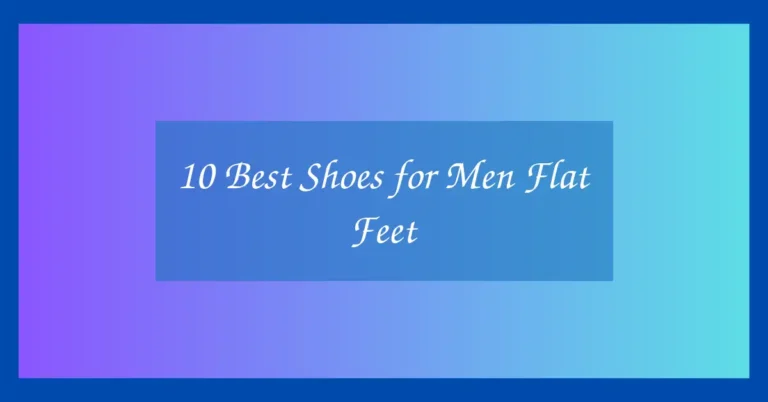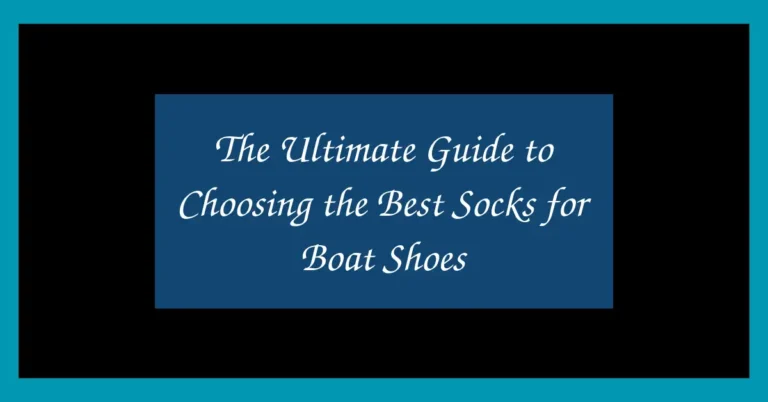10 Best Men Running Shoes for Flat Feet
Finding the best men running shoes for flat feet can significantly reduce discomfort and prevent injuries. Flat-footed runners often need extra support and stability to maintain proper alignment during movement.
In this in-depth review, we’ve carefully selected the top 10 options that deliver on cushioning, arch support, and motion control. Whether you’re an experienced marathoner or just getting started, the right pair can make every mile easier.
Best Men Running Shoes for Flat Feet
1. Brooks Beast GTS 23
The Brooks Beast GTS 23 is built specifically for runners who need maximum support. With its GuideRails® system, it helps control excess motion and keeps your stride aligned. The DNA LOFT v3 cushioning offers plush comfort underfoot without compromising on responsiveness.
This shoe features a breathable engineered mesh upper that provides a secure fit while ensuring air circulation during long runs. The padded tongue and heel collar enhance comfort and reduce friction for sensitive feet.
One of its key highlights is the extra-wide platform and reinforced midsole, making it ideal for runners with flat arches who tend to overpronate. It provides both a soft ride and structural integrity for everyday training.
Overall, the Beast GTS 23 is a reliable workhorse for those who prioritize support, comfort, and long-term foot health in a durable build.
Pros
- Excellent arch support for flat feet
- Plush yet stable cushioning
- Wide fit available
Cons
- Heavier than average
- Limited color options
2. ASICS Gel-Kayano 30
The ASICS Gel-Kayano 30 continues its legacy of being one of the best stability shoes for overpronators. Its 4D Guidance System offers dynamic stability that adapts to each stride, making it a solid choice for flat-footed runners.
It uses FlyteFoam™ Blast Plus Eco cushioning to deliver a responsive yet soft underfoot experience. The PureGEL™ technology in the rearfoot adds to the impact protection, especially helpful for heel strikers.
The engineered mesh upper ensures a locked-in feel without sacrificing breathability, while the Ortholite™ X-55 sockliner enhances step-in comfort right out of the box.
Kayano 30’s blend of innovative stability features and comfortable ride makes it suitable for daily runners looking for a dependable and protective shoe.
Pros
- Advanced support system for overpronation
- Durable and responsive midsole
- Comfort-focused upper
Cons
- Takes time to break in
- On the pricier side
3. New Balance 860v13
The New Balance 860v13 strikes a great balance between support and everyday usability. Designed for stability, it features a medial post to reduce overpronation perfect for flat-footed runners who need corrective alignment.
Its Fresh Foam X midsole provides premium cushioning while maintaining a relatively firm platform for controlled transitions. This helps reduce fatigue during long-distance runs.
Fit-wise, the shoe offers a secure midfoot hold and ample toe box space, ensuring comfort for various foot shapes. The engineered mesh adds breathability and flexibility where needed.
Thanks to its balanced ride and consistent performance, the 860v13 stands out as an excellent daily trainer for runners seeking reliable support and comfort.
Pros
- Stable and supportive ride
- Roomy toe box
- Fresh Foam cushioning absorbs shock well
Cons
- Slightly heavier for some runners
- Midsole feel is more firm than plush
4. HOKA Arahi 6
The HOKA Arahi 6 brings a lightweight stability experience without feeling overly rigid. It uses HOKA’s signature J-Frame™ technology to provide support along the medial side, effectively guiding flat feet through a neutral stride.
The shoe’s Meta-Rocker geometry encourages smooth heel-to-toe transitions, helping reduce stress on joints and arches. EVA foam cushioning ensures a soft, comfortable landing while keeping the weight down.
A breathable engineered mesh upper keeps the fit secure and cool during long runs. The padded collar and gusseted tongue add to the overall step-in comfort.
For flat-footed runners who want HOKA’s signature cushion without sacrificing control, the Arahi 6 is a top contender.
Pros
- Lightweight for a stability shoe
- Soft yet stable ride
- Breathable and secure upper
Cons
- Less plush than some HOKA models
- Limited outsole traction on wet surfaces
5. Saucony Guide 16
The Saucony Guide 16 is crafted for runners who require a mild to moderate level of stability. It incorporates a medial TPU guidance frame that controls pronation without adding bulk.
PWRRUN foam delivers a lively and cushioned feel underfoot, making it ideal for both daily mileage and tempo workouts. It strikes a nice balance between firmness and energy return.
The FormFit design wraps the foot comfortably, adapting to individual foot shapes while offering enough structure for flat arches. The upper is breathable, lightweight, and soft to the touch.
The Guide 16 stands out as a lightweight stability shoe that doesn’t feel overly intrusive, offering great value for flat-footed runners seeking a versatile option.
Pros
- Responsive and protective cushioning
- Guidance frame for moderate stability
- Adaptable fit
Cons
- Not ideal for extreme overpronation
- Some may find toe box a bit snug
6. Nike Structure 25
The Nike Structure 25 is tailored for runners who need enhanced stability with a comfortable, everyday design. It features a wider base and medial post that help manage overpronation, supporting flat arches throughout the gait cycle.
Its Cushlon 3.0 foam midsole provides a soft yet responsive feel, allowing for shock absorption during long-distance runs. A full-length crash pad ensures smooth transitions from heel to toe.
The engineered mesh upper adapts to your foot while maintaining breathability. With a padded collar and secure lacing system, the fit remains snug and stable even during faster runs.
For those looking for supportive footwear without the bulk, the Structure 25 is a dependable option with a familiar feel and Nike’s signature design language.
Pros
- Stable and supportive design
- Comfortable cushioning for daily runs
- Well-ventilated upper
Cons
- Heavier than some neutral shoes
- Not ideal for wide feet
7. Mizuno Wave Inspire 19
The Mizuno Wave Inspire 19 combines responsive cushioning with structured support. It features Mizuno’s signature Wave Plate technology, which offers stability by dispersing impact and guiding the foot naturally.
The ENERZY foam midsole enhances softness while maintaining the springy rebound required for tempo runs or long-distance training. The result is a smooth, cushioned experience for flat-footed runners.
The upper uses a redesigned mesh that improves breathability and flexibility without compromising lockdown. The heel counter and collar padding ensure secure, friction-free runs.
Ideal for flat-footed athletes who want energy return with motion control, the Inspire 19 delivers balance and durability in every stride.
Pros
- Wave Plate offers guided support
- Responsive and soft midsole
- Durable outsole for mileage
Cons
- Break-in period required
- Toe box may feel narrow
8. Adidas Solarcontrol
The Adidas Solarcontrol is engineered to offer both cushioning and structured support. It incorporates LEP 2.0 torsion system and a supportive heel clip to stabilize overpronation for flat-footed runners.
Boost midsole foam runs the length of the shoe, giving a highly cushioned, energy-returning ride that’s both comfortable and consistent for high-mileage runs.
The upper uses a breathable engineered mesh with reinforced zones that maintain structure without creating pressure points. A padded tongue and internal fit system help the foot stay secure throughout the stride.
With a balance of bounce and structure, the Solarcontrol stands out as a stylish and functional shoe for flat-footed runners needing stability with plush comfort.
Pros
- Boost foam offers energetic cushioning
- Stability features without stiffness
- Comfortable for long distances
Cons
- Slightly bulky profile
- Limited ground feel
9. On Cloudflyer 4
The On Cloudflyer 4 combines lightweight construction with advanced support for overpronators. Its unique CloudTec® sole design helps absorb impact while guiding the foot with each stride, supporting flat arches naturally.
Helion™ superfoam delivers responsive cushioning, while the integrated Speedboard® encourages smooth transitions and energy return during every step. The result is a light, springy feel with underlying stability.
Its engineered mesh upper provides zoned breathability and support, and the redesigned heel cradle adds extra security on impact. The shoe also has a sustainable build using recycled materials.
If you’re looking for a supportive shoe that doesn’t feel like a typical stability trainer, the Cloudflyer 4 is a modern, well-cushioned choice for flat-footed runners.
Pros
- Lightweight yet supportive
- Responsive ride with good bounce
- Eco-friendly design
Cons
- Premium pricing
- Midfoot may feel tight for some
10. Altra Provision 7
The Altra Provision 7 is a stability shoe with a natural foot-shape design, ideal for flat-footed runners seeking zero-drop cushioning. Its GuideRail™ system supports the arch and limits excessive inward rolling.
It features Altra’s EGO™ midsole, which delivers soft yet responsive cushioning for road runs. The zero-drop platform encourages a more natural gait cycle, promoting better alignment and posture.
The FootShape™ toe box allows your toes to spread out comfortably, improving stability and reducing pressure points. The upper is breathable and flexible, supporting longer sessions in comfort.
For runners who prefer a natural feel with structured guidance, the Provision 7 is a great pick that combines foot health with responsive performance.
Pros
- Foot-shaped toe box enhances comfort
- Zero-drop promotes natural stride
- Arch support without stiffness
Cons
- Not suited for all running styles
- Zero-drop takes time to adjust
| Product Name | Support Type | Midsole Cushioning | Best For | Weight Feel |
|---|---|---|---|---|
| Brooks Beast GTS 23 | Maximum Stability | DNA Loft v3 | Heavy Overpronators | Heavy |
| ASICS Gel-Kayano 30 | Dynamic Stability | FlyteFoam Blast+ | Daily Training | Medium |
| New Balance 860v13 | Moderate Stability | Fresh Foam X | Everyday Comfort | Medium |
| HOKA Arahi 6 | Mild Stability | EVA Foam | Long Runs | Light |
| Saucony Guide 16 | Moderate Support | PWRRUN | Tempo & Daily Runs | Light |
| Nike Structure 25 | Supportive Stability | Cushlon 3.0 | Road Runners | Medium |
| Mizuno Wave Inspire 19 | Wave Plate Support | ENERZY Foam | Mid-Distance | Medium |
| Adidas Solarcontrol | Structured Support | Boost | High Mileage | Bulky |
| On Cloudflyer 4 | Adaptive Stability | Helion Foam | Versatile Runners | Light |
| Altra Provision 7 | Natural Support | EGO Foam | Zero-Drop Runners | Light |
Best Men Running Shoes for Flat Feet Buying Guide
Arch Support is Non-Negotiable
Flat-footed runners should prioritize shoes with built-in arch support. Look for shoes featuring medial posts, guide rails, or dual-density foams that help correct overpronation. Proper arch support helps maintain joint alignment and minimizes injury risk.
Midsole Cushioning Matters
The best running shoes for flat feet typically offer soft yet responsive midsoles. Cushioning technologies like DNA Loft, Fresh Foam, or Boost help absorb shock while maintaining bounce. Avoid shoes with overly hard midsoles, as they might aggravate flat arches.
Wide Base and Stable Heel Counter
Shoes with a wide platform offer greater surface contact and reduce the chance of inward rolling. A firm heel counter adds extra stability, especially during heel strike, which is critical for runners with flat feet who tend to overpronate.
Motion Control or Stability?
If you’re severely flat-footed or deal with chronic overpronation, choose a motion control shoe. Stability shoes are often a better choice for moderate flat-footed runners who still want a mix of control and comfort without the bulk of motion-control designs.
Fit and Comfort Come First
Always consider the fit. Look for models that offer wide sizing options and a comfortable toe box. A snug midfoot and padded collar improve lockdown and reduce slippage, making runs smoother and blister-free. Test different models if possible to see what fits your foot shape best.
FAQ
Do flat feet really need special running shoes?
Yes. Flat feet tend to cause overpronation, where the foot rolls inward excessively. This can lead to stress on joints and muscles. Running shoes designed for flat feet offer corrective support and cushioning to minimize injury risk and improve overall performance.
Can neutral running shoes be used by flat-footed runners?
In most cases, no. Neutral shoes lack the structured support needed for flat arches. Unless a runner has flexible flat feet and neutral pronation, using neutral shoes can worsen discomfort. Stability or motion control shoes are better suited for proper alignment.
How do I know if I overpronate?
Common signs of overpronation include wear patterns on the inner edge of the shoe sole, inward ankle roll when walking, or discomfort in the knees and hips. A gait analysis at a local running store can confirm overpronation and help recommend suitable footwear.
Are zero-drop shoes safe for flat feet?
Zero-drop shoes like Altra can be safe if they offer adequate arch support and the runner transitions gradually. They promote a natural stride but can strain unprepared calves or arches. It’s best to ease into them with shorter runs and proper form adjustment.
How often should I replace running shoes for flat feet?
Like other running shoes, replace them every 300 to 500 miles. However, flat-footed runners may need to retire shoes sooner if the support components degrade quickly. Worn-out stability features can lead to poor alignment and increased risk of pain or injury.
Should I use orthotics with flat feet running shoes?
Orthotics can provide customized arch support for severe cases. If a shoe doesn’t provide enough structure or you have unique biomechanical needs, custom or over-the-counter orthotics can improve fit and function. However, many modern stability shoes are designed to be effective without them.
Verdict
Choosing the right pair of running shoes is critical for men with flat feet. The right shoe provides essential arch support, balances comfort with stability, and adapts to your stride. Whether you need max motion control or prefer a lightweight trainer with mild stability, there’s a great option on this list tailored to your running goals. Your feet and joints will thank you.







